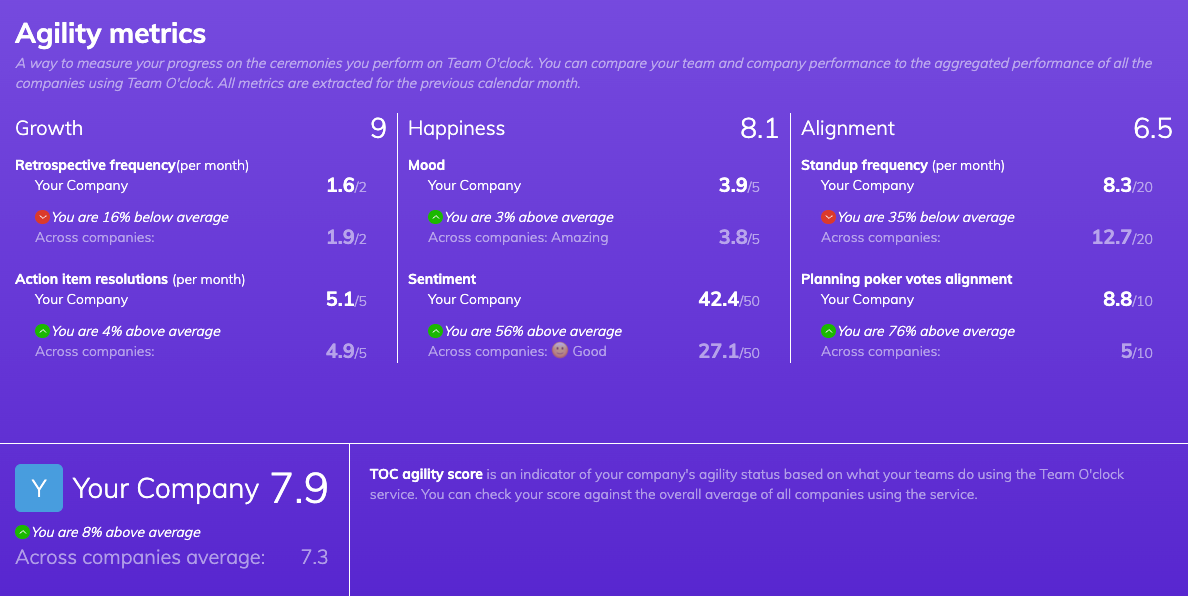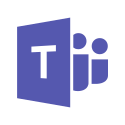
Measure your agile performance

There are a lot of checklists and surveys out there to gauge your team's agility. These tools are great but require extra effort. Additionally, some form of bias is unavoidable in the eyes of the beholder, the person filling up the survey.
In this post, we present another way to automatically check your teams' agility status using Team O'clock. Keep reading.
Introducing agility metrics
In Team O'clock, we thought of leveraging real-time data from scrum events into building agility metrics. The benefits of this approach are that:
Metrics reflect actual usage of scrum events from your teams
No additional effort is needed on your side, just keep using Team O'clock the way you do
With these metrics in place, you can check how your teams adopt scrum practices.
With Team O'clock agility metrics you can get a snapshot of your teams' agility in three core areas:
Growth, measuring the intentional effort your teams are making into getting better at their game. Aiming for growth is deliberate for each team, requiring investment and effort in reflection and actions to improve.
Happiness, measuring your teams' mood and sentiment as this reflects on the scrum events. This metric is reflecting direct feedback from team members on a weekly basis.
Alignment, measuring your teams' effort to collaborate better together and reach a consensus. Scrum events heavily promote alignment and that's the primary source for this metric.

Using the metrics from each of these areas, we provide you with an accumulated Team O'clock agility score for the whole company.

Since these metrics rely solely on data on Team O'clock usage, there are some drawbacks:
Inaccuracy due to non-usage. If you are not using Team O'clock for some of your scrum events then the score provided is inaccurate.
Specific team biases are taken into account, especially on the Happiness aspect. Still, this bias is less significant as more people contribute to the happiness metric.
How do my teams compare with others?
Considering the teams that already use Team O'clock we took this effort one step further. By aggregating all the above metrics across all the teams in Team O'clock we produce an average agility metric.
That average agility metric represents how all teams apply scrum over Team O'clock. It is a status agility benchmark across all teams using our services.

You can compare that benchmark with your team metrics to see how you're doing compared with actual teams performing scrum and agile as you do; this benchmark and your metrics reflect the real thing.
Direction and next steps on agility metrics
Agility metrics are moving in a direction of offering more value back to your teams. Acknowledging your current status is another point contributing to the team's growth and evolution.
On our service side, we already see a big potential in sharing more interesting usage information that can help your teams' growth journey. Despite having something in mind around agility posture, we would like to call for your input into shaping the next steps together.

More articles to check

Assist your team's growth with our partnership program:








